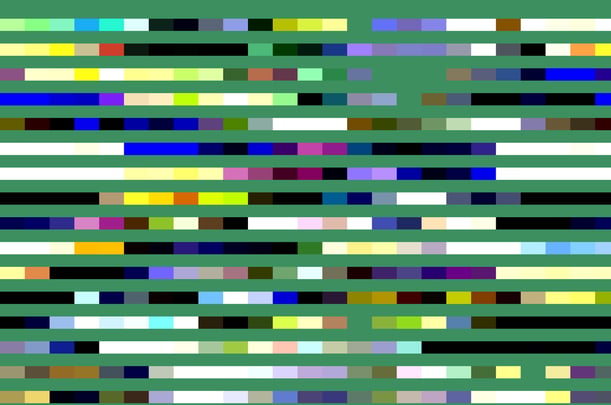Determining the most suitable transcriptomic technology to drive your large-scale compound screen, clinical study, or to assess a panel of genetic perturbations can be a headache, especially if you’re unfamiliar with the strengths and limitations of various sequencing technologies.
To ease this headache, in the final installment of our RASL-seq mini-series, we discuss the strengths and weaknesses of RASL-seq and compare it to the more recent mRNA barcoding methods MERCURIUS™ BRB-seq and MERCURIUS™ DRUG-seq to help you decide which to integrate into your next large-scale transcriptomics pipeline.
RASL-seq excels at quantifying known alternative splicing events
One of the main strengths of RASL-seq is its ability to sensitively quantify alternative splicing events (Li, Qiu and Fu, 2012).
This is thanks to the design of probe pairs integral to RASL-seq that span exon-exon junctions for over 5,000 known splice sites. When a given spliced mRNA isoform is present, probe pairs hybridize, ligate together, and undergo barcoding and sequencing to indicate how much of each transcript isoform is present per sample.
One problem with this probe-based approach is that only annotated targets are assessed rather than completely unbiased profiling of alternative splicing possible with RNA-seq at high-read depths. However, to overcome this, users can design and implement bespoke probe pairs to detect mRNA isoforms involved in any pathway, biological process, or cellular function relevant to their study.
Furthermore, RASL-seq has a similar sensitivity to detect splice junctions as standard labor-intensive qRT-PCR, which would be unfeasible to carry out on many samples (li, Qui and Fu, 2012). This may be an attractive draw for studies interested in the effect of large-scale perturbations or compound libraries on particular splice junctions or mRNA isoforms, and researchers have used RASL-seq to identify splicing differences in various therapeutic areas from cancer to neurodegeneration (Sun et al., 2015; Oh et al., 2021).
In contrast to RASL-seq, more recent mRNA-seq library preparation technologies such as MERCURIUS™ BRB-seq and MERCURIUS™ DRUG-seq cannot differentiate between different mRNA isoforms as these technologies are based upon the isolation and barcoding of the 3’ region of mRNA molecules and not splice junctions.
RASL-seq falls short for genome-wide gene expression profiling
If your study depends on an unbiased read-out of gene expression for all genes in the genome, there may be better choices than RASL-seq.
This is because it is limited to quantifying the expression of a maximum of only 500 genes, albeit with an impressive multiplexing capacity of 1,536 samples in the same sequencing run.
In contrast, MERCURIUS™ BRB-seq and MERCURIUS™ DRUG-seq provide accurate expression read-outs for over 20,000 genes in the human genome at a sequencing depth of 5 million reads per sample with a similar multiplexing capacity as RASL-seq.
RASL-seq has problems with error-prone ligation and PCR amplification biases
Another consideration is that RASL-seq relies on an error-prone probe ligation step (Li, Qiu, and Fu, 2012).
The accuracy of RASL-seq depends entirely on the efficiency of this ligation, but this stage can be affected by low amounts of RNA, probe sequence, or the low expression level of a given transcript. This leads to poor or random ligation of unrelated probes, which consumes valuable sequencing capacity and can limit the number of samples pooled per library (Larman et al., 2014).
Further problems arise in the accuracy of gene expression read-outs with RASL-seq due to artificial overestimations of transcript amounts due to the PCR amplification stage. Again, this ultimately results in less accurate gene expression data than other methods.
More modern technologies such as MERCURIUS™ BRB-seq and MERCURIUS™ DRUG-seq avoid these ligation and PCR amplification problems by not relying on probe ligation and by incorporating unique molecular identifiers (UMIs) as part of the sample barcode (Alpern et al., 2019).
With these UMIs, each mRNA transcript is individually tagged so the reads originating from a given transcript can be detected and computationally corrected for any PCR amplification problems. This results in accurate and reliable gene expression data even for samples with low-quality or quantities of RNA.
The take-home message
All-in-all, we have discussed the key things to consider if you wish to use RASL-seq for your next high-throughput transcriptomic experiment.
The main limitation of RASL-seq is its lack of genome-wide coverage, but novel 3’ bulk mRNA-seq methods such as the MERCURIUS™ family of technologies now address this to allow comprehensive genome-wide gene expression profiling for thousands of samples simultaneously.
Please get in touch with us here to find out more about MERCURIUS™ BRB-seq and MERCURIUS™ DRUG-seq.
References
-
Alpern, D. et al. (2019) ‘BRB-seq: Ultra-affordable high-throughput transcriptomics enabled by bulk RNA barcoding and sequencing’, Genome Biology, 20(1), pp.1-15. Available at: https://doi.org/10.1186/s13059-019-1671-x.
-
Larman, et al. (2014) ‘Sensitive, multiplex and direct quantification of RNA sequences using a modified RASL assay’, Nucleic acids research, 42(14), pp.9146-9157. Available at: https://doi.org/10.1093/nar/gku636.
-
Li, H., Qiu, J. and Fu, X.D. (2012) ‘RASL‐seq for massively parallel and quantitative analysis of gene expression’. Current protocols in molecular biology, 98(1), pp.4-13. Available at: https://doi.org/10.1002/0471142727.mb0413s98.
-
Oh, J. et al. (2021) ‘Widespread alternative splicing changes in metastatic breast cancer cells’, Cells, 10(4), p.858. Available at: https://doi.org/10.3390/cells10040858.
-
Sun, S. et al. (2015) ‘ALS-causative mutations in FUS/TLS confer gain and loss of function by altered association with SMN and U1-snRNP’, Nature Communications, 6(1), p.6171. Available at: https://doi.org/10.1038/ncomms7171.




